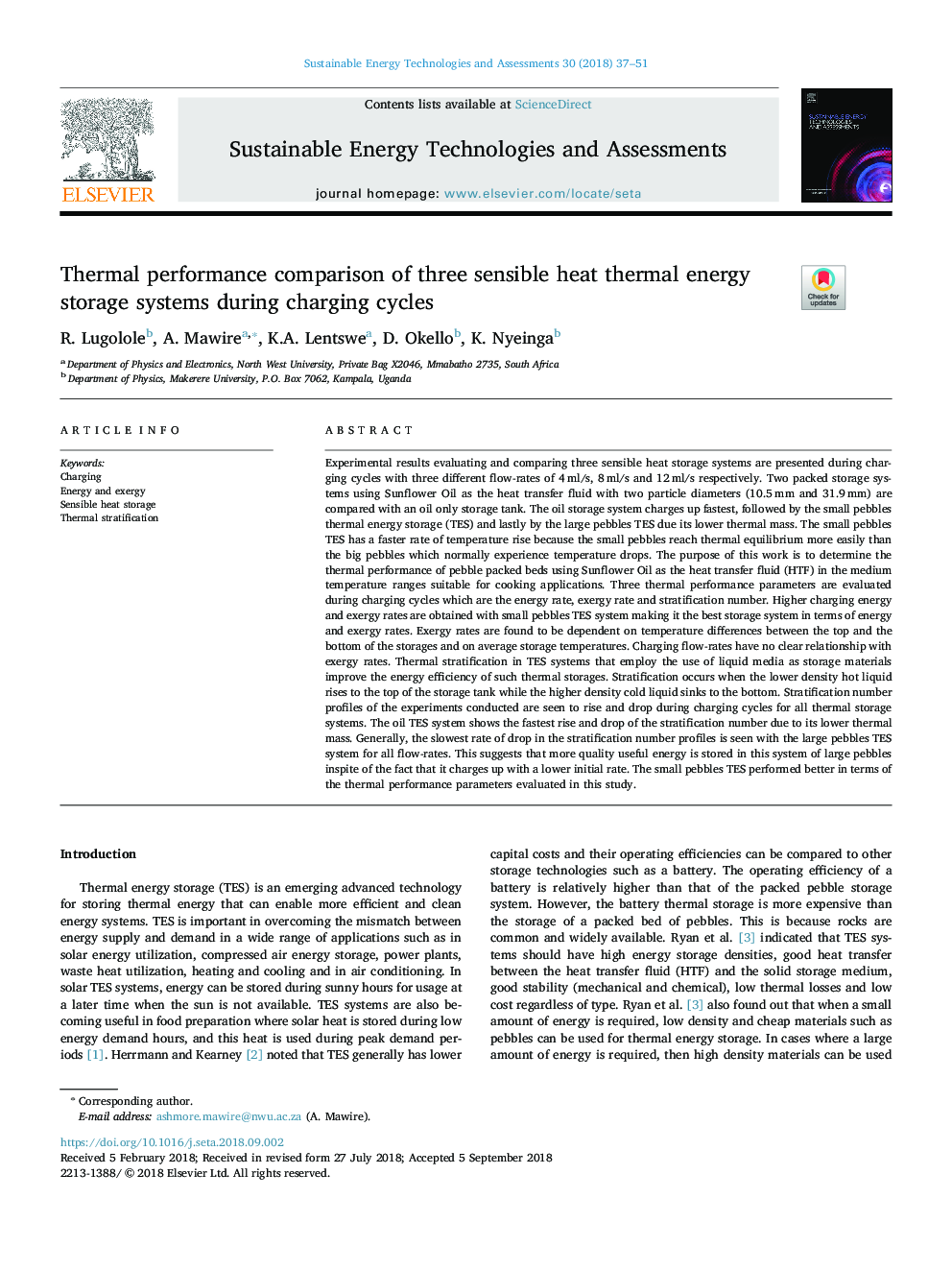| Article ID | Journal | Published Year | Pages | File Type |
|---|---|---|---|---|
| 10147941 | Sustainable Energy Technologies and Assessments | 2018 | 15 Pages |
Abstract
Experimental results evaluating and comparing three sensible heat storage systems are presented during charging cycles with three different flow-rates of 4â¯ml/s, 8â¯ml/s and 12â¯ml/s respectively. Two packed storage systems using Sunflower Oil as the heat transfer fluid with two particle diameters (10.5â¯mm and 31.9â¯mm) are compared with an oil only storage tank. The oil storage system charges up fastest, followed by the small pebbles thermal energy storage (TES) and lastly by the large pebbles TES due its lower thermal mass. The small pebbles TES has a faster rate of temperature rise because the small pebbles reach thermal equilibrium more easily than the big pebbles which normally experience temperature drops. The purpose of this work is to determine the thermal performance of pebble packed beds using Sunflower Oil as the heat transfer fluid (HTF) in the medium temperature ranges suitable for cooking applications. Three thermal performance parameters are evaluated during charging cycles which are the energy rate, exergy rate and stratification number. Higher charging energy and exergy rates are obtained with small pebbles TES system making it the best storage system in terms of energy and exergy rates. Exergy rates are found to be dependent on temperature differences between the top and the bottom of the storages and on average storage temperatures. Charging flow-rates have no clear relationship with exergy rates. Thermal stratification in TES systems that employ the use of liquid media as storage materials improve the energy efficiency of such thermal storages. Stratification occurs when the lower density hot liquid rises to the top of the storage tank while the higher density cold liquid sinks to the bottom. Stratification number profiles of the experiments conducted are seen to rise and drop during charging cycles for all thermal storage systems. The oil TES system shows the fastest rise and drop of the stratification number due to its lower thermal mass. Generally, the slowest rate of drop in the stratification number profiles is seen with the large pebbles TES system for all flow-rates. This suggests that more quality useful energy is stored in this system of large pebbles inspite of the fact that it charges up with a lower initial rate. The small pebbles TES performed better in terms of the thermal performance parameters evaluated in this study.
Related Topics
Physical Sciences and Engineering
Energy
Energy Engineering and Power Technology
Authors
R. Lugolole, A. Mawire, K.A. Lentswe, D. Okello, K. Nyeinga,
